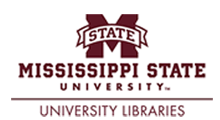
Theses and Dissertations
Issuing Body
Mississippi State University
Advisor
Dhillon, Jagmandeep
Committee Member
Gholson, Drew
Committee Member
Singh, Gubir
Committee Member
Kaur, Gurpreet
Committee Member
Irby, Jon; Bararpour, Taghi
Date of Degree
8-7-2025
Original embargo terms
Visible MSU Only 1 year
Document Type
Graduate Thesis - Campus Access Only
Major
PSS-Plant and Soil Science (Agronmy)
Degree Name
Master of Science (M.S.)
College
College of Agriculture and Life Sciences
Department
Department of Plant and Soil Sciences
Abstract
In the Mississippi Delta, continuous dryland soybean (Glycine max L.) production practice is a selection for those that do not or cannot irrigate their crops. However, no crop rotation results in yield losses due to diseases, increased insect population, weed species pressure, nutrient leaching, and soil erosion. Incorporation of cover crops might offer potential benefits but needs further investigation. The objectives were to determine the optimum cover crop planting time (R6 and harvest) and ideal cover crop species, and evaluate their impact on dryland soybean grain yield, quality, and plant population. R6 overseeded cereal rye (Secale cereale L.) produced the maximum amount of biomass in all years except 2022, where crimson clover (Trifolium incarnatum L.) outperformed the rest of the treatments. Cover crop overseeding time had no effect on soybean yield. Most of the cover crop species resulted in similar soybean yield as the control plot of no cover crop.
Sponsorship (Optional)
Mississippi Soybean Promotion Board, United States Department of Agriculture -Agricultural Research Service, National Center for Alluvial Aquifer Research
Recommended Citation
Pruden, Michael C., "Impact of overseeding cover crops on dryland soybeans in Mississippi Delta" (2025). Theses and Dissertations. 6692.
https://scholarsjunction.msstate.edu/td/6692


